Since the rookery is located on our way to shopping and medical care, Mary Lou and I had stopped there several times in hopes of timing their arrival. As has happened in previous years, they waited until February to arrive. They are starting to build their nests, which can be very close to each other.

We can expect nest construction to be followed by egg-laying in early March. Most of the young will fledge during June. Double-crested Cormorants and Anhingas are nesting among the storks, which are gathered into several groups:
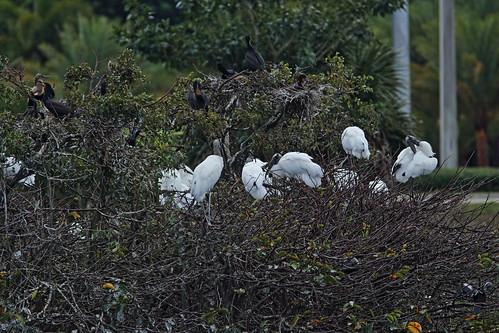
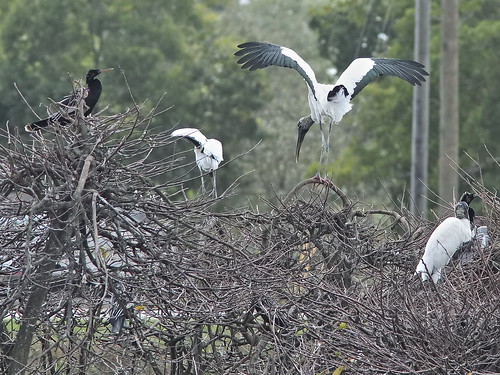
We counted 80 storks (75-83 in several hand counts of those in the rookery plus others in surrounding grounds), 45 cormorants and 7 Anhingas in the rookery. Many more herons will also begin nesting there in coming weeks.
The storks are graceful in the air:

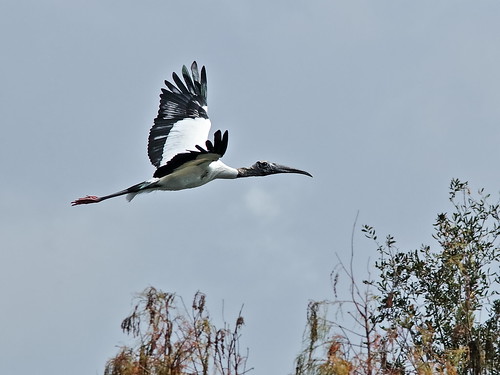
Although the cormorants are often derided as ugly pests, I find that their plumage has an almost sculptural quality. This one is coming in for a landing:
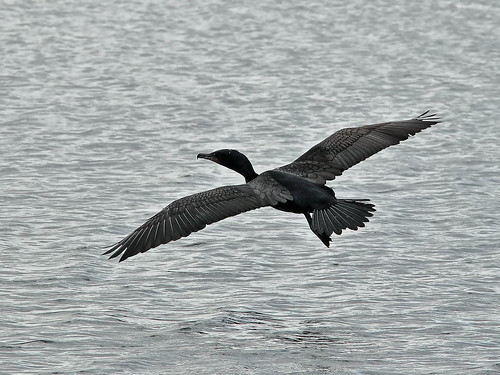

We found only three Tricolored Herons, but expect to see many more during their nesting season:

The rookery and surrounding park is home to a multitude of Green Iguanas. They are vegetarians and appear not to be a direct threat to the birds except that they compete for space in the rookery. In breeding condition they develop an orange color, as in this huge specimen, fully 5 feet long:
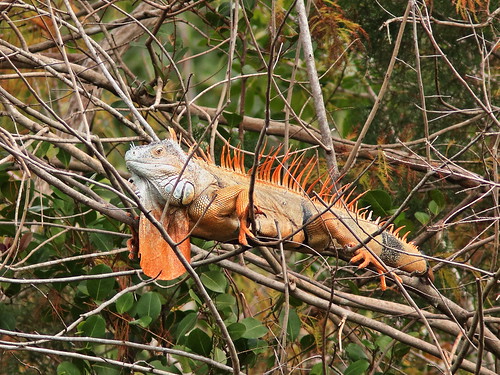
Oddly, a Purple Gallinule, its extremely long toes adapted to walking on lily pads, was perched in a tree across the lake:
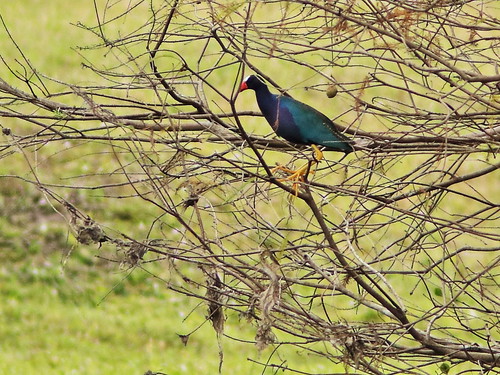
It flew down to forage in a more familiar setting:
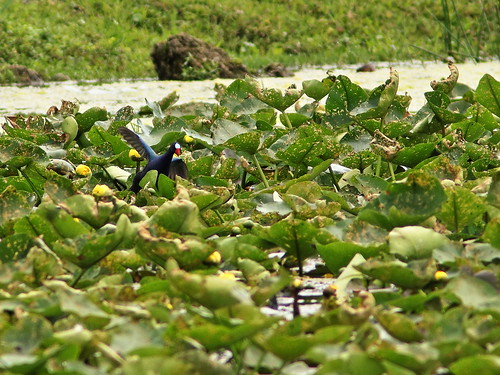
Some of our early morning walks in the local Wounded Wetlands have been cut short by the threat of rain:
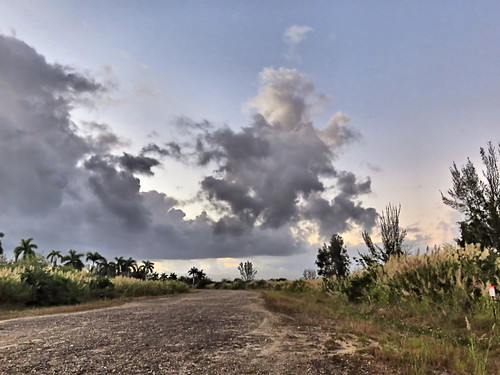
On February 11, our back yard lake was clear and still just before sunrise:

Also on the home front, one clear morning I added a new (dwarf) planet to my "life list." The planets were spaced equally, aligned (from lower left to upper right)-- Saturn, barely visible in the glow of the rising Sun, very bright Venus, then Jupiter... and following the same line, a very faint Dwarf Planet Ceres. The star Antares is also visible just below a line halfway between Jupiter and Ceres. (Click on image to enlarge, and then squint to see them!). Taken with my pocket camera, hand-held:
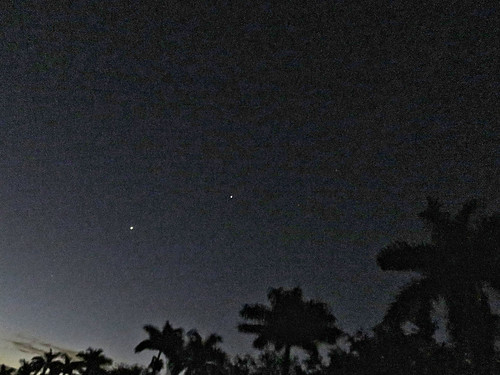
This is a chart of the sky on the same day (February 7) and time from about the same point of view:
(©2019 Dominic Ford, some rights reserved )
At the local Bald Eagle nest, one of the eaglets has been conspicuous, while the second keeps low. In 2 out of 3 nests, the first-hatched is a female, which gets a head start and also grows faster and is much more aggressive than a male. If the second is a male it learns to stay out of the way of his big sister, waiting his turn to be fed. Here, the older chick appears to be begging for food from the male parent while the female is feeding the younger eaglet:

The male and female take turns roosting nearby and keeping an eye on the nest while the mate forages or tends to the eaglets.
Male (Pride) roosting on a nearby tree:

Female (Jewel) assumes a regal bearing as she stands watch above the nest:

To obtain a photo of a tiny (20mm/0.75 inch) but beautiful creature of interest in the grass in front of the eagle nest, I had to lie down on the ground. This is a Dainty Sulphur:
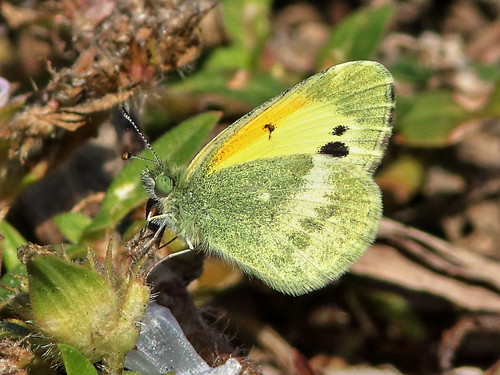
= = = = = = = = = = = = = = =
Linking to Misty's CAMERA CRITTERS,
Linking to Eileen's SATURDAY'S CRITTERS,
Linking to SKYWATCH FRIDAY by Yogi, Sylvia and Sandy
Linking to WEEKEND REFLECTIONS by James
Linking to BirdD'Pot by Anni
Linking to Our World Tuesday by Lady Fi
Linking to Wild Bird Wednesday by Stewart
Linking to Wordless Wednesday (on Tuesday) by NC Sue
Linking to ALL SEASONS by Jesh
________________________________________________
Please visit the links to all these memes to see some excellent photos on display
________________________________________________

cool shots
ReplyDeletestorks rock
most trails around here are closed when there are nesting eagles...so you are really lucky
Love the Bald Eagle shots they are fabulous and I also love the Iguana. The last couple of days we have been watching (and listening to) the storks migrating here over France. We are lucky to live right under their flight path and we see them twice a year. Have a good day Diane
ReplyDeleteI really do love visiting you, so much beauty, wildlife, gorgeous birds... everything is perfect.
ReplyDeleteI love the photos of the storks in flight. So graceful! The sky over your backyard lake is another stunning shot!
ReplyDeleteI love those clouds reflecting off still water
ReplyDeleteHello, it is great to see the Wood Storks doing so well. I would enjoy living close to their rookery and roosting spot. Great shots of the Eagles, Storks, Heron, Cormorant and the Gallinule. I think the Iguana is a cool critter. Your sky photos are beautiful. Thank you for linking up and sharing your post. Happy Saturday, enjoy your day! Have a happy weekend! PS, thanks for the comment on my blog.
ReplyDeleteA visit to a breeding colony of Wood Storks is one if nature's great experiences. I am a little dismayed to see the proliferation of Green Iguanas in Florida. Invasive species are really getting to be an issue.
ReplyDeleteNice shots! I love the reflection. I don't think I've ever seen an orange iguana before.
ReplyDeleteFabulous collection of shots
ReplyDeleteI love the shot with the water, clouds, and sky. I am partial to cormorants even though we don’t have any in Oklahoma that I know of. I love how they looks ghostly when drying their wings out.
ReplyDeleteThe storks are loved in Holland (little kids are told they were brought by a stork to the family!, but they're not as elegant looking (completely white) as these ones here! Thanks for giving us an update about the Eagle family. Seeing the Purple Gallinule on the lily pads makes me realize these birds are much smaller than I thought!
ReplyDeleteMany thanks for your constant presence at All Seasons to share yours - much appreciated:) Have a great week!
I know that they are not closely related, but the wood storks remind me of Ibis - especially in those nesting colonies.
ReplyDeleteCheers - Stewart M - Melbourne
Once again Kenneth a wonderful full and varied post with beautiful photography and interesting reading.
ReplyDelete@Stewart-- When I was a kid, some of my bird books called them "Wood Ibis," but as you point out they are not closely related. Ibises are classified with the spoonbills and closer to herons, while storks are more closely related to the vulture family than to ibises.
ReplyDeleteLove the iguana though personally they kind of terrify me up close. Have a great week.
ReplyDeleteWonderful bird photos and awesome skies!
ReplyDelete